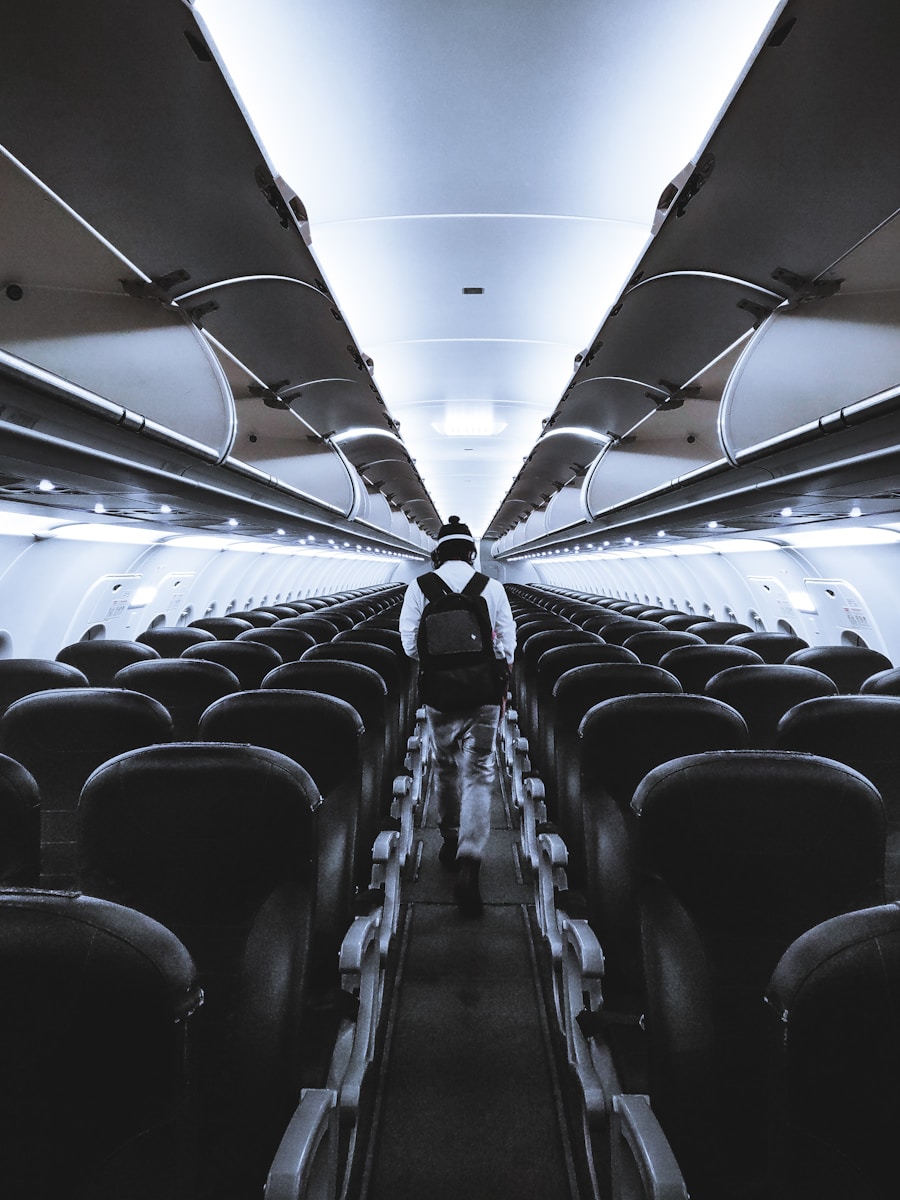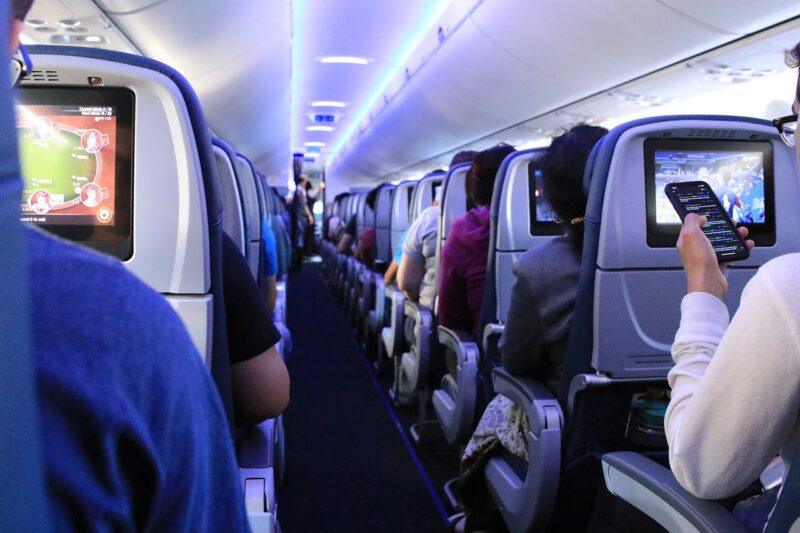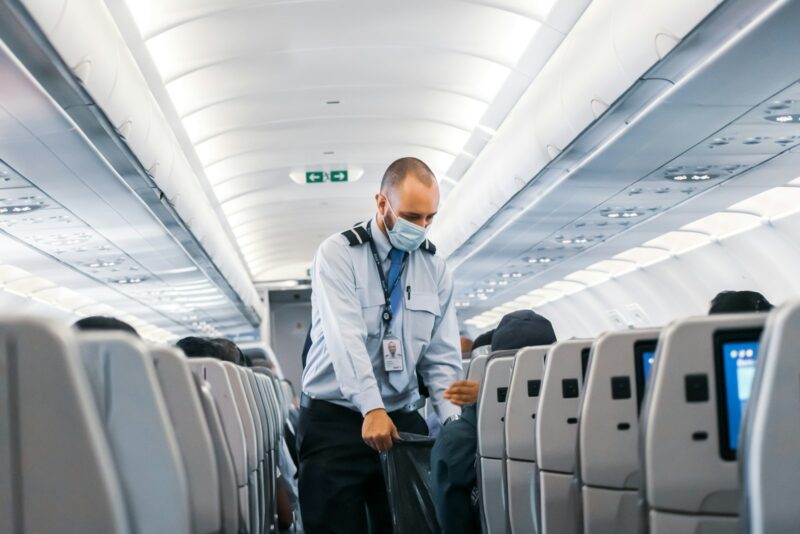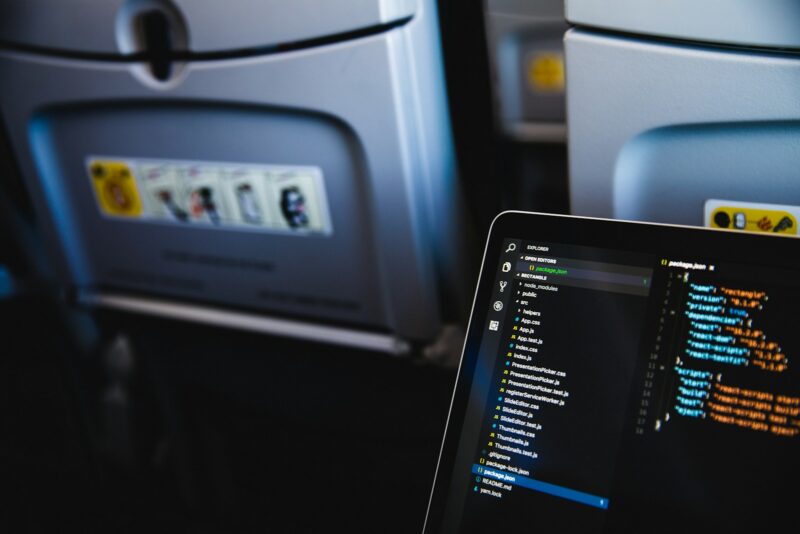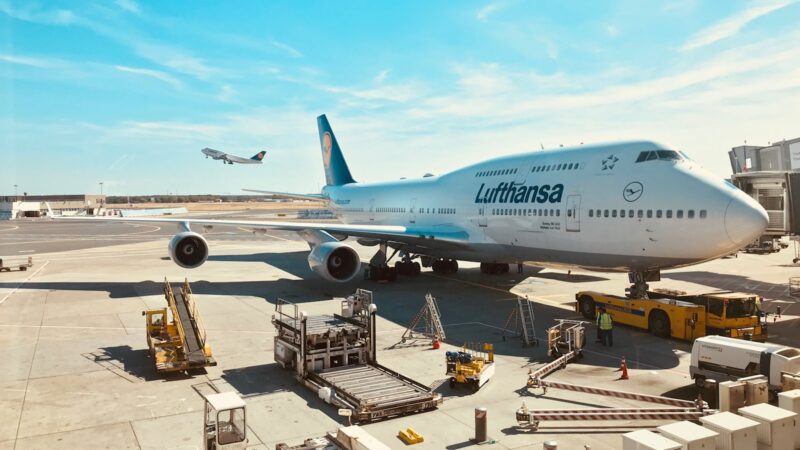Table of Contents
ToggleChoosing the Best Seat on a Plane: Tips for Comfort and Convenience
Flying can be stressful, but picking the best seat on a plane can significantly improve your experience. Choosing the best seat means finding one that fits your needs, whether that’s extra legroom, a quick exit, or less turbulence. Understanding where these seats are located and what benefits they offer can make your flight more enjoyable.
For anyone looking for comfort, consider seats in the exit rows or bulkhead rows. These spots usually have extra legroom, though you’ll need to meet specific requirements and assist in case of emergencies. If you prefer a quieter environment and are willing to forgo some under-seat storage, bulkhead seats at the front are also a good choice.
Traveling during the pandemic has heightened the need for personal space and quick exits. A seat near the front of the cabin can help you disembark swiftly and reduce contact with other passengers. Aisle seats also offer more flexibility and ease for movement. These small choices can make a big difference in your air travel experience.
Understanding Airplane Seating Layouts
Choosing your airplane seat can greatly impact how enjoyable your flight is. Knowing the layout of different aircraft models and seating configurations can help you make an informed decision.
General Layout Of Different Types Of Aircraft
Most airplanes fall into two categories: narrowbody and widebody. Narrowbody aircraft like the Boeing 737 or Airbus A320 usually have a single aisle and are common for domestic flights. Widebody aircraft such as the Boeing 787 or Airbus A350 have two aisles and are often used for international travel.
In narrowbody planes, you’ll find the economy seats in a 3-3 layout, meaning three seats on each side of the aisle. The front may feature first class or business class with a 2-2 layout.
In widebody planes, the economy class may have a 3-4-3 or 2-4-2 layout. Premium cabins like business class or first class could be arranged as 2-2-2 or even 1-2-1 for more privacy and space.
Common Seating Configurations
Seating configurations can vary by aircraft type and airline. For example, the Airbus A380 often features a 3-4-3 layout in economy and more spacious 1-2-1 seating in business class.
Popular configurations include:
- 3-3: Common in narrowbody aircraft like the Boeing 737.
- 2-4-2: Often found in widebody aircraft like the Airbus A330.
- 3-4-3: Common in large planes such as the Boeing 777.
Seats near the wings tend to feel less turbulence. The front is often quieter but can be more crowded due to galleys and lavatories. Choosing seats in the front can make your exit quicker, especially in large jets like the Boeing 787.
Importance Of Checking The Specific Aircraft Model
Before selecting a seat, always check the specific model of the aircraft. Even within the same airline, different models offer different seating experiences.
Knowing if you’re flying on an Airbus A350 or a Boeing 787 can provide useful insights.
- Airbus A350: Known for its quiet cabin and advanced air filtration.
- Boeing 787: Offers larger windows and better cabin pressure for improved comfort.
Check the seat map for details on where the galleys, lavatories, and emergency exits are located. Flight attendants often serve from the galleys, so seats nearby might experience more activity but quicker service.
Factors To Consider When Choosing The Best Seat On A Plane
Choosing the best seat on a plane can make your journey more comfortable and enjoyable. Several factors such as legroom, proximity to restrooms, and seat position contribute significantly to this.
Legroom
It’s essential to consider the amount of legroom you’ll have. If you have long legs or just like extra space, look for seats in the exit row, bulkhead, or at the front of the plane. These normally provide extra legroom compared to the standard seats. Keep in mind that some seats, especially in the exit row, can have restrictions like non-reclining seats.
To measure, seat pitch (distance from one seat to the same point on the seat in front) is a good indicator. For long-haul flights, more legroom can mean better sleep and comfort.
Proximity To Restrooms
Proximity to restrooms can be crucial, especially during long flights. If you need to use the bathroom frequently, consider selecting seats near them. However, these seats can also come with downsides:
- Noise from people queuing
- Less privacy due to constant foot traffic
- Potential odors
Consider whether easier access is more important than avoiding these potential drawbacks.
Window Vs. Aisle Vs. Middle Seats
When choosing between a window, aisle, or middle seat, think about your priorities:
- Window seats offer a view and can be great for sleeping without interruptions.
- Aisle seats provide easy access to the restroom and more freedom to move around.
- Middle seats are generally the least preferred due to lack of freedom and view but may sometimes be the only option available.
Carefully weigh the pros and cons of each based on your needs and preferences.
Seat Recline
Seats with limited recline can be a deal-breaker for long flights. Check if the seat has full recline capabilities, especially if you plan on sleeping. Bulkhead seats and some in exit rows might have restrictions on how far they can recline.
Using tools like SeatGuru can help you identify seats with good recline options and ones to avoid.
Noise Levels
For a quieter flight, opt for seats towards the front of the plane and away from the engines and restrooms. The rear can be noisier due to engine noise and bathroom foot traffic.
Keep in mind that seats over the wing tend to be noisier but might provide a steadier ride. Balancing peace and quiet with other factors like legroom and recline is essential.
Turbulence Sensitivity
If you are sensitive to turbulence, seats near the wings are usually the most stable. The center of the plane experiences less motion, making it a more comfortable spot during turbulence.
Avoid seats at the back (rear) where motion is more noticeable. Choosing your seat with this in mind can significantly reduce discomfort from turbulence.
Boarding And Disembarking
Think about how quickly you want to get on and off the plane. Seats near the front facilitate quicker disembarking, valuable when you have tight connections. Aisle seats can also make it easier to grab your bags and go.
On the other hand, bulkhead and exit row seats might allow for early boarding due to special requirements. This is useful for settling in early with your carry-on items overhead.
Special Considerations
When choosing the best seat on a plane, consider specific needs like traveling with children, disabilities, or loyalty programs. Paying attention to these details can make your flight more comfortable and stress-free.
Traveling With Children
If you’re traveling with children, look for seats near the front of the plane. These seats usually allow quicker exits, which can be helpful with restless kids. Bulkhead seats offer extra legroom and space for a skycot, but they might not have under-seat storage.
Consider airlines like Southwest that offer family pre-boarding, allowing you to settle in before the cabin fills up. If you’re taking a red-eye flight, opt for window seats where your child can sleep more comfortably. Many airlines also provide amenities for children, so check-in early and inquire about them to enhance your travel experience.
Traveling With Disabilities
For passengers with disabilities, it is crucial to request accommodations ahead of time. Airlines such as Delta and Air Canada provide various services, like priority boarding and assistance with connections. Bulkhead and aisle seats are often easier to access and have more space.
Most airlines have seating policies that permit you to select a seat for free if you have a disability requiring certain accommodations, like extra legroom or easy access to the bathroom. Make these requests during check-in. Additionally, familiarize yourself with the individual policies of the airlines you are flying with to ensure they meet your needs.
Frequent Flyers And Loyalty Programs
Frequent flyers with elite status in loyalty programs like Delta SkyMiles or Air Canada’s Aeroplan have an edge when picking seats. You get early access to seat selection, allowing you to choose preferred seats without an extra seat selection fee.
These programs often offer other benefits, like priority boarding and complimentary upgrades. If you have tight connections or a layover, seats near the front can help you exit quickly. Utilizing these perks can give you a more comfortable and efficient travel experience.
Frequent flyers should also be smart about accumulating and using points. By doing so, you can save money on seat fees and enjoy better seating options frequently reserved for elite members.
Tools And Resources For Choosing The Best Seat On A Plane
Finding the best seat on a plane makes a big difference in how comfortable your flight will be. Using the right tools and resources can help you make an informed choice.
Online Tools
Several online tools can help you choose the best seat on a plane. One of the most popular is SeatGuru. It offers detailed seat maps for nearly every airline, allowing you to check legroom, seat width, and proximity to restrooms.
Another useful tool is Kayak, which provides insights into the best and worst seats on different aircraft. By using these tools, you can visually compare different seats and make the best choice for your needs.
Airline-Specific Seat Maps
Many airlines provide their own seat maps on their websites. These maps can be helpful because they often include specific details about amenities, such as extra legroom or reclining features. When booking your flight, check the airline’s own seat map for more personalized and up-to-date information.
For example, airlines like Delta, United, and American Airlines offer these maps, showing where the best seats might be. This is especially useful if you are a frequent flyer with a particular airline.
Reviews And Forums
Reading reviews and participating in forums can give you insider knowledge about the best seat on a plane. Websites like TripAdvisor and AirlineRatings have community-generated reviews where travelers share their experiences.
Forums like FlyerTalk can also be valuable. Here, frequent flyers discuss their own seat preferences and give advice. Combining information from these reviews and forums with seat maps gives you a fuller picture.
Tips For Using These Tools
To get the most out of these tools, follow a few practical steps:
- Plan ahead: Start checking seat maps as soon as your flight is booked.
- Compare multiple sources: Use both airline-specific maps and independent tools like SeatGuru to cross-check information.
- Check reviews: Look up recent reviews to see if there have been any changes to seat configurations.
- Be flexible: Sometimes the best seats are taken early, so having a backup choice is smart.
- Consider your needs: Think about what is most important for your comfort—whether it’s extra legroom, proximity to restrooms, or a window seat.
Best Seat On A Plane: Conclusion
Choosing the best seat on a plane can significantly impact your travel experience. By understanding your needs and preferences, you can make a more informed decision. Here are a few key points to remember:
- Extra Legroom: Look for exit row or bulkhead seats. Exit rows provide significant legroom, but remember, you must meet certain requirements and be willing to assist in case of emergencies.
- Quieter Environment: Bulkhead seats, usually at the front of a section, offer a quieter ride and more space. However, they lack under-seat storage.
- Speedy Exit: If you need to get off the plane quickly, seats near the front are your best bet. An aisle seat can also help you move faster once the plane lands.
- Budget Considerations: Some airlines let you choose seats for free, while others may charge a fee. It’s a good idea to manage your booking online and see your options before making a decision.
- Seat Configuration: Understand the plane’s seating layout. For instance, narrow-body planes are often in 3-3 configurations, while wide-body planes might have a 2-4-2 setup. Knowing this helps you choose a seat that matches your comfort needs.
Best Seat On A Plane: Additional Resources
Finding the perfect seat can elevate your flying experience. To help you with this, there are useful tools, contact information, and forums where seasoned travelers share their insights.
Popular Seat Selection Tools And Websites
Several online tools can make seat selection easier. SeatGuru is a top choice, offering detailed seat maps and user reviews. You can enter your flight information to see seat recommendations and avoid problem spots.
Another useful tool is ExpertFlyer, which provides details on availability and alerts for better seats. It’s great if you’re looking to upgrade or switch to a more desirable seat.
FlyersRights.org is also worth exploring for passenger rights and comfort data. Using these tools ensures you’re making the most informed choice possible.
Contact Information For Major Airlines
Sometimes, directly contacting the airline can be the best strategy for seat selection. Here’s some key contact information:
- Delta Airlines: 1-800-221-1212
- American Airlines: 1-800-433-7300
- United Airlines: 1-800-864-8331
- Southwest Airlines: 1-800-435-9792
- JetBlue Airways: 1-800-538-2583
These numbers can help you get real-time information on available seats or get assistance with seat selection issues. Always have your booking reference ready when you call.
Travel Forums Or Communities
Travel communities can be a treasure trove of insider tips. FlyerTalk is one of the most popular forums, where you can find extensive discussions on seat choices, airline experiences, and specific plane models.
Reddit’s r/travel and r/flight subreddits offer first-hand stories and advice from frequent flyers. It’s a good place to ask questions and get quick responses from experienced travelers.
Joining these forums allows you to get personalized advice and stay updated on the latest travel hacks and tips.



